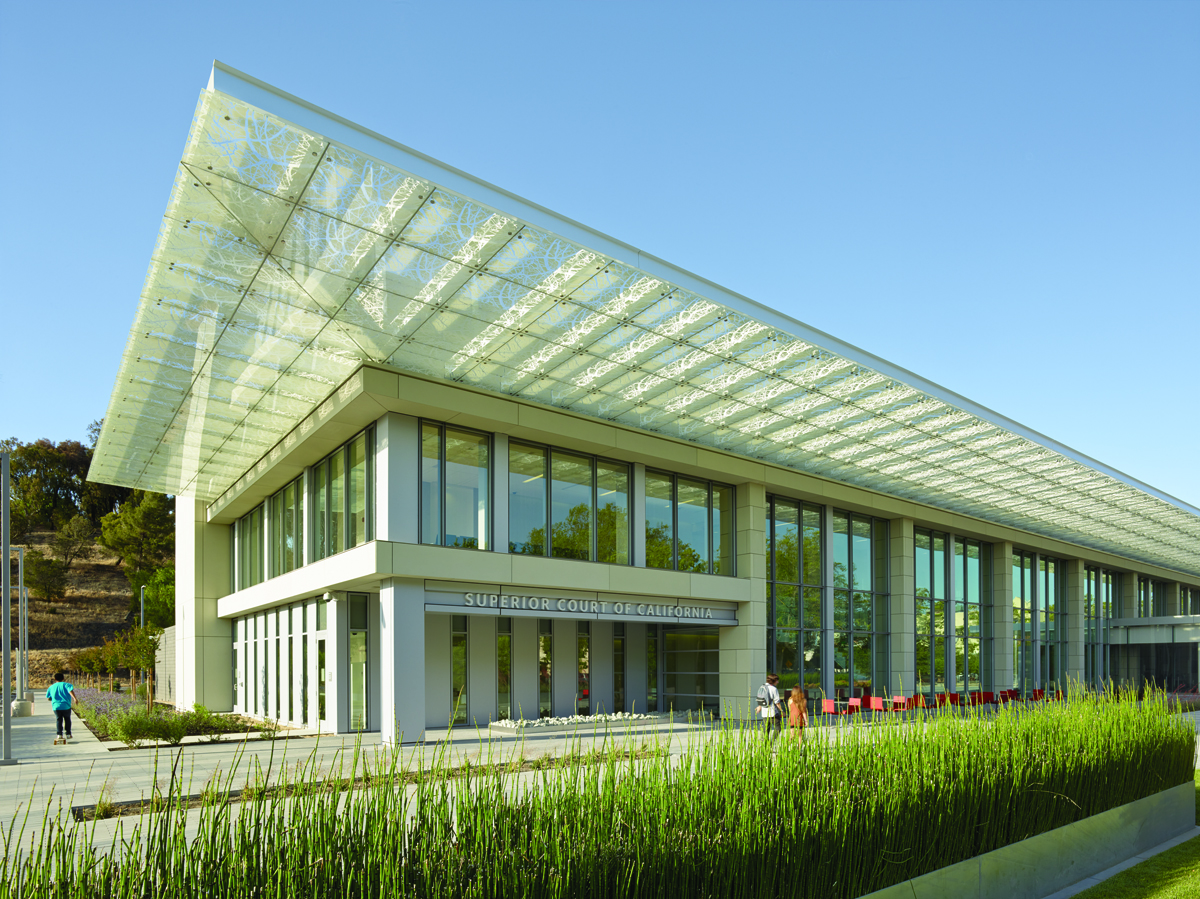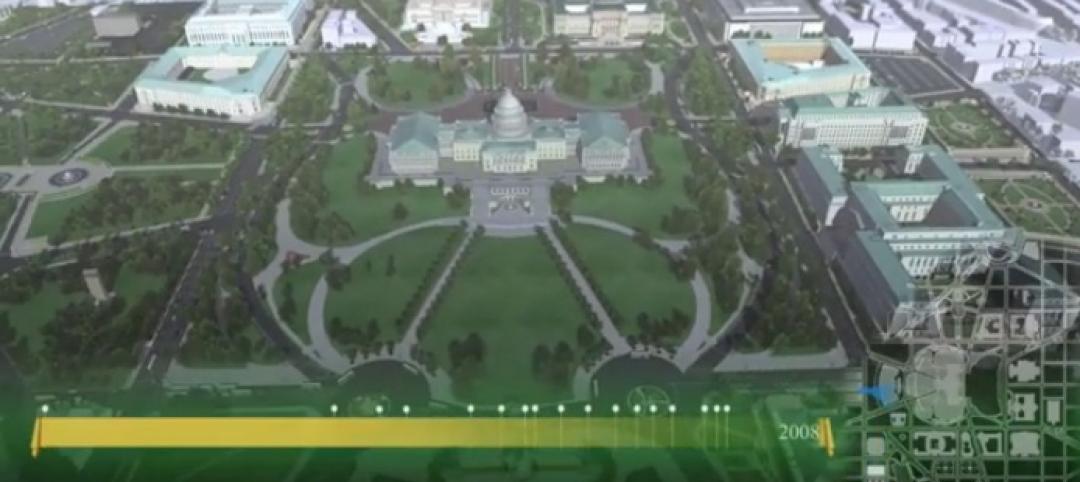It took six years, but in 2013, the Utah State Courts finally got the state legislature to approve a budget for the $34.2 million 2nd District Juvenile Courthouse, in Ogden. When it opens this May, the 85,000-sf, five-story building will include eight courtrooms, offices for judges and their 50-member staff, and space for juvenile probation services and the Weber County Sheriff’s security staff.
Projects like the Utah courthouse are luxuries for many states that, despite improving economies, are struggling to keep their heads above water.
Since the second half of 2013, state tax collections have fluctuated. They were down in the first half of 2014, then rebounded by 4.4% in the third quarter of 2014 over the same period a year earlier, according to the Rockefeller Institute of Government. The institute expects continued revenue growth in the coming quarters, but state tax collections have failed to keep pace with expenditures, especially as more states expand Medicaid coverage under the Affordable Care Act.
At least 16 states are facing serious budget shortfalls, according to the Washington Post. These include Louisiana, which is looking at a $1.6 billion deficit, which ballooned by $400 million as the price of oil—a huge source of state revenue—fell by 50%. Other states with impending deficits include Virginia ($2.4 billion), Pennsylvania ($1.8 billion), Kansas ($1 billion through FY 2016), Alabama ($950 million), and Maryland ($900 million).
The National Association of State Budget Officers (NASBO) notes that all states but Vermont either require their governors to submit or sign a balanced budget, or their legislatures to pass a balance budget. With tax increases mostly off the table, achieving balance means spending cuts. Recent data offer inconclusive clues as to the impact of those cuts on future state-funded construction and renovation work.
One snapshot—NASBO’s “State Expenditure Report 2012-2014”—projected a 5.5% increase, to $17.4 billion, in the states’ capital expenditures in fiscal 2014 for projects in an “all other” category that includes stadiums, public schools, and healthcare.
The Census Bureau’s broader estimates for public state and local construction put in place were less robust. Last year that number stood at $251.5 billion, up 2.2% from 2013, but still the second-lowest spending year since 2006.
Big-ticket categories were Roads and Bridges, Education, Transportation, and Sewage and Waste Disposal. Amusements and Recreation (which include sports stadiums) jumped 7.7% to $8.7 billion. Office construction was up 3.6% to $5.4 billion; Public Safety projects (jails, firehouses, etc.) fell by 7.9%, to $6.1 billion. Healthcare declined by 10.5%, to $6.3 billion.
Jan Frew, Deputy Administrator for Idaho’s Public Works division, reached out to several of her counterparts in the National Association of State Facilities Administrators on behalf of BD+C. Most of those contacted reported slight increases in tax revenues but only modest state-funded construction activities, she says.
Frew says that, since 2011, Idaho’s appropriations for public works have been “fairly steady,” at around $22.5 million per year. But while appropriations have recently spiked to $36 million, lawmakers aren’t confident that tax revenues will keep growing and are being cautious about adding to the state’s project funding base. Frew says the state is also reluctant to use bonds to fund projects.
Other states are looking for new ways to lower their construction costs. Illinois, Indiana, South Carolina, and West Virginia are among the states debating whether to repeal prevailing wage laws that apply to government-funded projects.
Newly elected Hawaii Governor David Ige, a Democrat, proclaimed that his state would actively seek more federal dollars to help fund state projects for housing, water, and transportation.
On the other hand, a can-do spirit is evident in Maine, where Governor Paul LePage, a Republican, recently unveiled a three-year, $2 billion, 1,900-project public works plan that, in 2015 alone, would include safety improvement projects at 76 locations, and $4 million for improvements at Portland’s International Marine Terminal.
In Michigan, the first stages of a new $88 million Welcome Center and park for the State Capitol have been initiated, even though the project’s funding mechanism isn’t in place. John Truscott, a spokesman for the Michigan State Capitol Commission, says the early work is being paid for through a $3 million allocation established last year for Capitol renovation and upkeep. The commission is seeking bond financing for the Welcome Center that would be repaid with tobacco taxes.
Related Stories
| Aug 26, 2013
What you missed last week: Architecture billings up again; record year for hotel renovations; nation's most expensive real estate markets
BD+C's roundup of the top construction market news for the week of August 18 includes the latest architecture billings index from AIA and a BOMA study on the nation's most and least expensive commercial real estate markets.
| Aug 22, 2013
Energy-efficient glazing technology [AIA Course]
This course discuses the latest technological advances in glazing, which make possible ever more efficient enclosures with ever greater glazed area.
| Aug 22, 2013
6 visionary strategies for local government projects
Civic projects in Boston, Las Vegas, Austin, and suburban Atlanta show that a ‘big vision’ can also be a spur to neighborhood revitalization. Here are six visionary strategies for local government projects.
| Aug 14, 2013
Green Building Report [2013 Giants 300 Report]
Building Design+Construction's rankings of the nation's largest green design and construction firms.
| Jul 29, 2013
2013 Giants 300 Report
The editors of Building Design+Construction magazine present the findings of the annual Giants 300 Report, which ranks the leading firms in the AEC industry.
| Jul 19, 2013
Reconstruction Sector Construction Firms [2013 Giants 300 Report]
Structure Tone, DPR, Gilbane top Building Design+Construction's 2013 ranking of the largest reconstruction contractor and construction management firms in the U.S.
| Jul 19, 2013
Reconstruction Sector Engineering Firms [2013 Giants 300 Report]
URS, STV, Wiss Janney Elstner top Building Design+Construction's 2013 ranking of the largest reconstruction engineering and engineering/architecture firms in the U.S.
| Jul 19, 2013
Reconstruction Sector Architecture Firms [2013 Giants 300 Report]
Stantec, HOK, HDR top Building Design+Construction's 2013 ranking of the largest reconstruction architecture and architecture/engineering firms in the U.S.
| Jul 19, 2013
Renovation, adaptive reuse stay strong, providing fertile ground for growth [2013 Giants 300 Report]
Increasingly, owners recognize that existing buildings represent a considerable resource in embodied energy, which can often be leveraged for lower front-end costs and a faster turnaround than new construction.
| Jul 19, 2013
Must see: 220 years of development on Capitol Hill in one snazzy 3D flyover video
The Architect of the Capitol this week released a dramatic video timeline of 220 years of building development on Capitol Hill.














